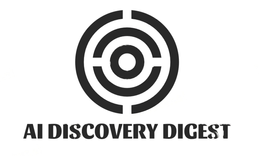Imagine a world where non-profit organizations can stretch every dollar, maximize their impact, and focus on what truly matters—serving their communities. This vision is becoming increasingly attainable thanks to artificial intelligence (AI). As technology evolves, so does its potential to transform how non-profits operate. From enhancing decision-making processes to improving resource management, AI offers innovative solutions tailored for the unique challenges faced by these organizations.
Common challenges faced by non-profits in resource allocation
Non-profits often juggle multiple responsibilities with limited resources. This reality leads to tough decisions about where funds and manpower are allocated.
Many organizations struggle with donor fatigue. As contributions dwindle, prioritizing programs becomes increasingly challenging. Non-profits must make choices that can impact their mission and reach.
Another hurdle is the lack of data-driven insights. Without proper analytics, it’s difficult to understand which initiatives yield the best results. This leaves many organizations operating on guesswork rather than informed strategies.
Time constraints further complicate matters. Staff members wear too many hats, leading to burnout and inefficient use of skills. As a result, critical tasks may fall by the wayside due to overwhelming workloads.
Competition for grants can be fierce. With numerous deserving causes vying for funding, non-profits must continuously innovate their approaches to stand out in a crowded field.
How AI can help in optimizing resources for non-profits
AI can transform the way non-profits manage their resources. By analyzing vast amounts of data, AI tools can identify trends and patterns that might go unnoticed. This insight allows organizations to allocate funds more effectively.
Automating routine tasks is another advantage. Non-profits often juggle multiple responsibilities with limited staff. AI can handle administrative duties, freeing up valuable time for teams to focus on their mission.
Predictive analytics plays a crucial role too. Non-profits can forecast donor behavior or project needs based on historical data. This helps in crafting tailored outreach strategies.
AI-driven platforms enhance communication with stakeholders and beneficiaries alike. They ensure that messages reach the right audience at the right time, maximizing engagement.
The integration of machine learning algorithms enables continuous improvement in resource allocation strategies over time, ensuring organizations stay agile and responsive to changing circumstances.
Case studies of successful implementation of AI in non-profit organizations
One inspiring example is the Rainforest Foundation, which utilized AI to monitor deforestation in real-time. By analyzing satellite imagery and employing machine learning algorithms, they could identify illegal logging activities swiftly. This proactive approach allowed them to take action before irreversible damage occurred.
Another notable case involves the American Red Cross. They implemented AI-driven chatbots for disaster response coordination. These bots provided immediate assistance by answering questions and directing individuals to resources during crises. The efficiency of this technology significantly improved their service delivery, especially after natural disasters.
In education-focused non-profits like Teach For America, predictive analytics has transformed recruitment efforts. By identifying potential candidates who align with their mission more effectively, they can ensure that passionate educators enter underserved classrooms.
These organizations showcase how tailored AI solutions can address specific challenges within the non-profit sector while maximizing impact on communities served.
The Future of AI and Its role in Furthering The Goals of Non-profit Organizations
The future of AI in the non-profit sector is bright and full of potential. As technology continues to advance, we can expect even greater innovations that empower organizations to maximize their impact.
Imagine a world where predictive analytics help non-profits anticipate community needs before they arise, allowing for proactive interventions. Or consider how machine learning algorithms could streamline administrative tasks, freeing up valuable time and resources for mission-driven activities.
As collaboration tools evolve through AI capabilities, partnerships between organizations can become more effective and meaningful. Non-profits will be better equipped to share insights and strategies across sectors, amplifying their collective efforts.
Data privacy remains a vital concern as these technologies develop. Ensuring ethical use of data while leveraging AI’s power will be essential for maintaining trust with supporters and communities alike.
By harnessing the power of artificial intelligence now, non-profits are paving the way for a more efficient model that prioritizes social good while maximizing every dollar spent. The journey ahead holds exciting possibilities; it’s an opportunity waiting to be seized by those ready to embrace change.


